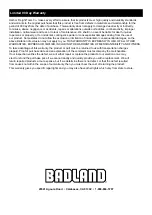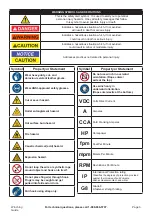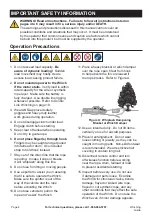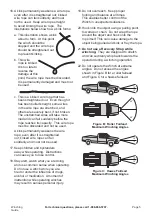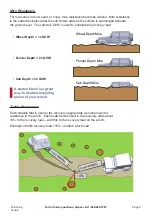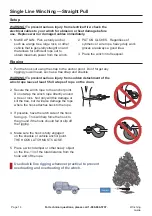
Page 8
For technical questions, please call 1-888-866-5797.
Winching
Guide
Estimating Load
7KHDELOLW\WRGHWHUPLQHWKHORDGWKDWWKHUHFRYHU\ZLOOWDNHLVDQLPSRUWDQWVNLOOWR
learn. It allows you to properly setup rigging for a successful recovery the first time
and reduces the chance of equipment damage and danger to bystanders.
Resistance Types
• Grade Resistance:
The resistance
of pulling a vehicle up a slope.
• Mire Resistance:
The resistance
of pulling a vehicle from soft terrain,
such as mud, sand or snow.
• Tackle Resistance:
The added resistance
RIVQDWFKEORFNVGXULQJZLQFKLQJ
Grade Resistance
For recoveries or applications that pull a vehicle up a slope, grade resistance is a factor in the
recovery load. This is because there are many other variables to consider off-road that add
UHVLVWDQFH)RUH[DPSOHWKHJURXQGLVQRWVPRRWKRUVROLGOLNHSDYHPHQWWKHYHKLFOH¶VZKHHOV
PD\QRWWXUQVPRRWKO\WKHYHKLFOH¶VVWHHULQJPD\EHEURNHQDQGDKRVWRIRWKHUIDFWRUV
For the majority of off-road recoveries, the grade resistance
can be equal to the gross vehicle weight (GVW).
For smooth ramps used to load a trailer or other
situations that are not as varied, you can use the
following to estimate the recovery load. To
estimate load you will need the gross vehicle
ZHLJKW*9:DQGWKHJUDGHRIWKHWHUUDLQ
• GVW can be found on the nameplate of
the vehicle, or by a weigh station scale.
• % Grade = Rise / Run
([DPSOH5LVHIW5XQIW *UDGH
Reference the chart to find the estimated
recovery load resistance.
([DPSOH*9:RIOERQDJUDGH
UHFRYHU\ORDGRIRIOE $ERXWOE
Grade
Angle
% of GVW
20%
11
20%
40%
22
37%
60%
31
51%
80%
39
62%
100%
45
71%







